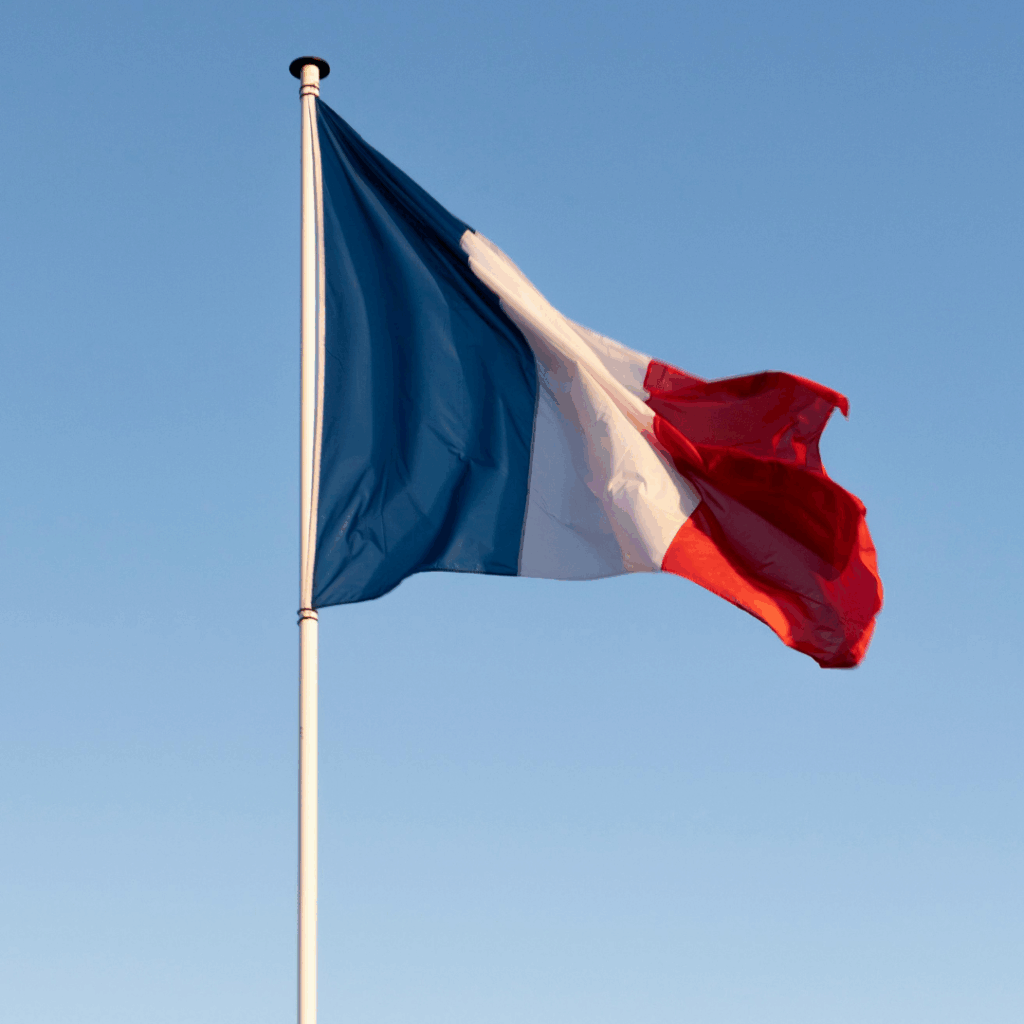

Celebrating Red, White and Blue
The French Tricolour is one of 29 flags worldwide that use the classic red, white and blue – Countries With Red, White And Blue Flags.
The semiotics of colour, or the way that colours convey meaning in culture, is a fascinating field. Red in national symbols has been traditionally associated with overcoming battles, white with peace and unity and blue with loyalty and strength.
But in a global, urbanised world with colours increasingly disconnected from the underlying materials through artificial finishes, lighting and large-scale projections, social scientists point to an emerging hypersaturated chromatic environment as a new kind of code or stereotype – and new form of cultural appropriation – Understanding new colors in urban environments: Deciphering colors as semiotic resources.
As a general rule, brighter colours tend to be experienced as stimulating – and even overwhelming for some – A case study on the effect of light and colors in the built environment on autistic children’s behavior. Equally, on average, older adults, with our yellowing eyes and slowing brains tend to cope better with increased saturation, brightness and contrast, especially when it comes to interfaces that are cognitively demanding like apps on a phone – Elderly-Centric Chromatics: Unraveling the Color Preferences and Visual Needs of the Elderly in Smart APP Interfaces.
But people living with dementia can be less sensitive to some modalities like visual contrast, but more sensitive to others like movement, touch and sound, and may avoid situations where they are likely to feel overwhelmed – A comparison study of sensory processing in older adults with and without dementia. In stressful and unsupportive environments, sensory processing sensitivity is linked to poorer health outcomes. But given a postive environments, especially one that offers social support, higher sensitivity is linked with better quality of life.
Another reminder that, while generlisations can be flags of convenience, we are all unique.
Tennis ball reflex
Sitting on the sofa glued to the Wimbledon final, wondering how on earth those athletes return a serve heading over the net at up to 140 miles per hour.
The Tennis without Talent blog and this piece from the Lister Tennis club are packed with factoids that will help you ace a pub quiz – Real Life Physics of Tennis, The Bright Idea: How David Attenborough Transformed Tennis Visibility.
And here are three for the visual geeks:
Glowing Green in Somerset
Thank you to Sean Harvey and the team for hosting John Bullock, Ravi Lakhani and I the St Monica’s Trust in Sandford, Somerset as part of a pilot, preparing for the National Care Partnership Care Innovation Challenge presentations at the Care Show in October.
We’re looking at cost-effective, sustainable ways to make sure residents and staff get a good nights’ sleep through smart lighting infrastructure. Watch this space!
Home Stretch
By the time you read this I will have set off along the promenade in Herne Bay, looking out for my dear old Dad’s Twingo wheelchair waiting at the finish line.
Does the spectator’s gaze help or hinder performance? It may depend on who you are, who the spectators are, and the complexity (or at least the perceived difficulty) of the task. These are surprisingly strongly linked.
Essentially, if you believe all those people are on your side, you believe you’re good enough to finish and fighting for a bigger cause, any audience will spur you on. If you consider them hostile, especially if you doubt your competence, a neutral or even mildly friendly crowd will put you off your stride – Social Influence of Sport Spectators.
So I’m going to remember my ‘why’ and put my best foot forward.